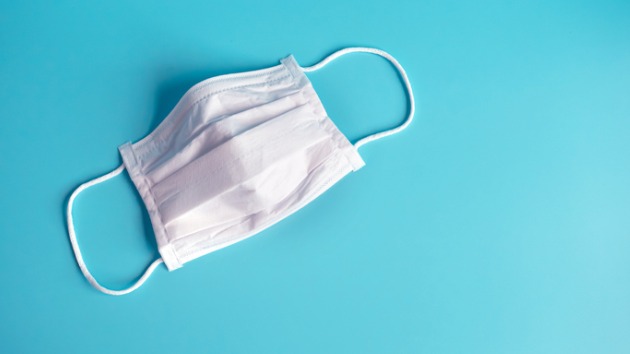By KARMA ALLEN, ABC News(KANSAS CITY, Mo.) — Hospitals in and around Kansas City, Missouri, are overwhelmed amid a troubling spike in COVID-19 cases that has forced some facilitates to refuse non-emergency care and others to turn away ambulances due to over-occupancy.Average daily COVID-19 hospitalizations were up about 10% this week across the Kansas City region as the Midwest grapples with record-breaking daily infection rates and intensive care unit bed shortages, according to the Mid-America Regional Council’s dashboard.Earlier this week, the Kansas City metro area saw its highest number of new COVID-19 hospitalizations on record with the seven-day average rising to about 133. Separately, hospitals in the area reported a 28% increase in the average number of patients on ventilators, week-over-week, while daily ICU occupancy rose about 11% from last week, according to the dashboard.All in all, total weekly hospitalizations jumped to 867, compared to 835 last week, pushing several area hospitals to refuse ambulances due to lack of beds.Marc Larsen, operations director of Saint Luke’s COVID Response Team, the second-largest care provider in the region, said Kansas City area hospitals are “bursting at the seams.”Hospitals being ‘pushed to the brink’Saint Luke’s daily patient average rose to about 85 for the month of October, compared to about 63 per day in September, Larsen said. The system reported a daily patient average of only about 15 COVID-19 patients a day in May and June.”The current trajectory and the rapid increase in infections is a big concern for me,” Larsen told ABC News in an interview Friday. “And with our numbers where they are coming into influenza season, I worry that the facilities will continue to be pushed to the brink on our ability to care for each and every single one of these patients like we need to.”He added, “As a result, our emergency departments and having to leverage alternative care units in our facilities, meaning that we wind up seeing emergency department patients in our pre-anesthesia care units, recovery rooms and sometimes in waiting rooms.”Larsen, who is also an emergency care physician at the downtown Kansas City hospital, said at least eight metro hospitals and emergency departments had to temporarily stop accepting ambulances due to the high volume of patients on Tuesday and Wednesday.”We had eight facilities at one given time that were on ‘diversion,’ or what we call high-volume status,” he said. “That doesn’t mean that we don’t still take the time-critical diagnoses — we still take our stroke patients, our trauma patients and our heart attack patients — but it does limit our ability to provide care to the remainder of ambulances.””When we get to that volume and when we get to that capacity we’re force to hold patients, because may not physically even have a bed available,” he added.Hospitals volumes were in much better shape as of Friday afternoon, but he said he “would not be surprised if this evening and throughout the weekend that we continue to see high volumes and emergency departments across the region.”He said Saint Luke’s hospitals were currently experiencing volumes that they only see during peak flu season, warning the public that the situation could get a lot worse by winter.Fears of a brutal flu ‘pandemic"”Peak flu season is always our busiest time of the year. We have a lot of sick patients and our volumes are a lot higher,” Larsen said. “The volumes that we’re seeing at this moment are very similar to what we see, typically, in January or February. If we’re already at that level and we have this large influx of influenza patients — as we typically do — where will we take care of all these patients?”Like many health officials, he urged all Americans to get a flu shot this year, even if you’ve never gotten one before.”Aside from the social distancing, masking and hand hygiene, we don’t have a way to prevent this, but we do have one for the other pandemic that we’re looking at and that’s influenza,” Larsen said. “I’ve been encouraging all my patients to get their flu shots now because I think that’s gonna really help us prevent this second surge, not of COVID patients but other patients that need the same type of resources that COVID patients need.”Alarming figures across the boardAs of Friday, Missouri had reported 2,017 new confirmed cases over the last 24 hours, bringing the total number of cases since the start of the pandemic to 152,571.The state now ranks fourth nationally in reported deaths over the past seven days, and eighth in the number of new cases, according to the statewide dashboard.Missouri also reported 17 new virus-related deaths on Friday, pushing the total number of COVID-19 fatalities to 2,459, state officials said Friday.As of late Thursday, COVID-19 hospitalizations were up to 1,443 across the state, the highest on record. Health officials had not released Fridays data as of the time of publication.Gov. Mike Parson recently announced that the state had submitted its plan for administering the impending COVID-19 vaccine to the Centers for Disease Control and Prevention in an effort to be proactive about slowing the spread.”This has been an incredible collaborative effort, and I want to thank all of the agencies and partners involved for their hard work and dedication. In the midst of an ever-changing and unprecedented situation, our team of professionals has done outstanding work to develop a detailed plan,” Parson said in a statement this week after submitting the plan. “We are in a great place in the planning process and will be well-prepared to take action as soon as a vaccine becomes available.”Copyright © 2020, ABC Audio. All rights reserved.












